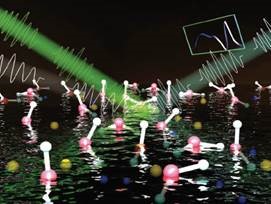The Chemistry & Biochemistry Department presents Dr. Heather C. Allen on “Ions and Lipids at the Air-Water Interface: Electric Fields induced by Organization” on on March 16.
 Allen, Professor of the Department of Chemistry and Biochemistry at Ohio State University, is an expert in sum frequency generation spectroscopy and uses this technique to study the local intermolecular interactions and organization of water with different solutes and monolayers. The applications she chose to study specifically are about environmental chemistry and biophysical applications.
Allen, Professor of the Department of Chemistry and Biochemistry at Ohio State University, is an expert in sum frequency generation spectroscopy and uses this technique to study the local intermolecular interactions and organization of water with different solutes and monolayers. The applications she chose to study specifically are about environmental chemistry and biophysical applications.
Abstract: The air-water interface has been the focus of research in the Allen Lab at Ohio State for more than a decade. We utilize nonlinear and linear optical spectroscopic methods to understand the local intermolecular interactions and organization of water itself with various solutes and monolayers. Motivated by atmospheric aerosol chemistry of marine and urban regions, and biophysical applications related to lung lining and biomembranes, monovalent and divalent cations and anions continue to be investigated by our group using conventional and heterodyne-detection vibrational sum frequency generation (VSFG) spectroscopy. Interest is in the surface propensity and availability for reaction at water surfaces. Ion valency, polarizability, size, shape, and identity of the counterion are critical factors in considering ion organization and subsequent changes in interfacial electric field at the air water interface. The hydrating water molecules play a key role in the interfacial organization of other species in the solution, and it is studied directly as it reveals the details of ion interfacial distributions. Phospholipids and fatty acids are also investigated using both VSFG and Brewster angle microscopy (BAM). Head group differences, especially with regard to hydrogen bonding capability and extent, are discerning factors for surface organization and shape distinction at the water surface.


















Comments